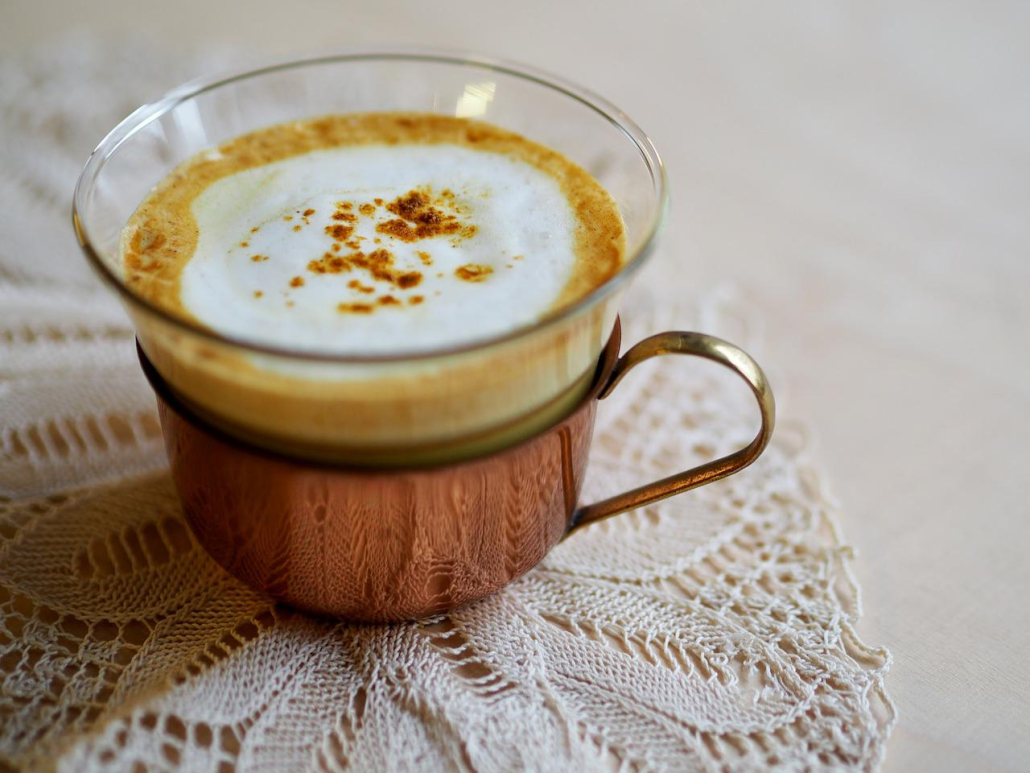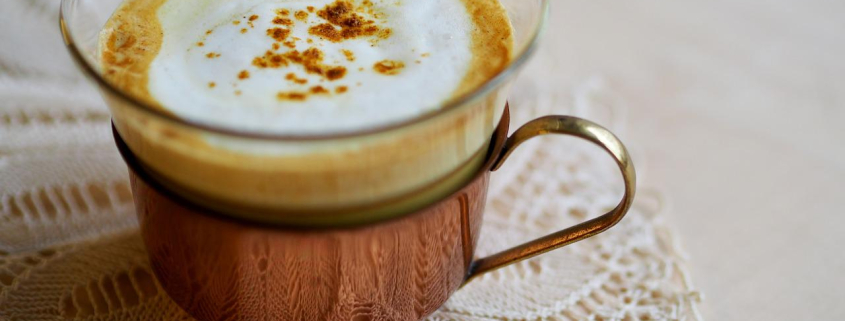Golden money maker — I mean, milk latte

Parched on a cold day, I stumbled into a local New York City coffee shop. That’s when I spotted a gleaming drink, the soon-to-be bane of my existence. The words “Best Seller,” draped over the cup captured my gaze instantly. I kept reading — I wish I hadn’t. Agave, oat milk and (dun dun dun!) turmeric.
Oh, turmeric. A dear friend that has lived in my grandmother’s anjarai petti, or spice box, since childhood was now sitting on a throne next to good old pumpkin spice like, “You prayed on my downfall, but I made it to the top.”
I couldn’t help but be proud of the seasoning’s rise to hipster fame, but her new name stopped me in my tracks.
“Golden milk latte?! You’ve gotta be kidding me.” Cue the longest eye roll imaginable.
My brown friends, you guessed it. The traditional home remedy we all grew up on, haldi doodh, or as my Tamil family refers to it, manjal paal, has hit the major milestone of TikTok trend, chic wellness commodity and prized coffee shop specialty. It’s now bedazzled with an assortment of nut milks and organic sugars at outrageous prices.
However, more noteworthy than anything else, it has finally been deemed acceptable to the Western palate; all it took was a makeover, a new name and some white influencers to get it there. And quite frankly, it shouldn’t have. I’m ready to have that cultural conversation.
Turmeric, a spice known for its yellow hue and ability to stain pretty much anything, dates back in use nearly 4,000 years to Vedic times in South Asia. According to Ayurvedic medicine, it is believed to have many benefits, from healing cuts to helping with digestion. In my household, it was a natural cure-all.
A spoonful of turmeric would make it into the conversation when I had a cold or a bruise or a breakout. The antiseptic and anti-inflammatory benefits were ones many Desi grandmothers swore by. It made the spice a golden staple in every situation.
I grew up with a complicated relationship with turmeric, which stemmed from being made fun of. I can still picture the disgusted looks of people in my classes eyeing my yellow food and calling it gross and different. I remember my classmate observing the golden residue on my face from a turmeric mask I had put on the night before and plain out laughing at the “neon” color of my skin. I remember wanting so badly to have grilled cheese or fries instead of the nutritious meal that my mom had made me. Heck, I’d even settle for a PB&J — and I have a severe nut allergy. I became exhausted trying to defend my food choices and wanted all of the chaos to stop with the delight of a manjal-free processed Lunchable.
Despite how much I loved the taste and qualities of the spice, turmeric was a tool that furthered my “otherness” and exiled me from Western acceptance as a South Asian American, so much so that I actively sought to hide that portion of my identity. It’s a bruise not even the spice itself could heal.
Flash forward to present day — the widely accepted “golden milk latte” has amassed nearly 43.3 million views on TikTok alone.
As I browsed through the plethora of videos, I noticed an array of influencers, none of which I could resonate with. My culture was not represented in the space as teachers. Some notable faces compared the flavors of this trendy drink to “Chai tea,” which, I hate to break it to you, is really just “tea tea” when translated. None referred to the origins of the drink, and to the naked eye, you would believe that the concept was birthed in quarantine, not thousands of years ago.
I’m by no means stating that this manjal paal and golden milk latte exchange is all a bad thing. It should be inferred and encouraged that with immigration and food communication, more individual recipes and alterations will come into fruition. People move, interact and create all the time, and food is a bridge of connection, a language we all speak and feel strongly about.
I do believe, however, in the power of respecting cultural context. If there is profit without acknowledgment of the source, it’s worth noting. If something that non-white individuals were ostracized for in their youth is suddenly deemed trendy and good when detached from their identity, it’s worth noting.
We can use the power of the golden milk latte and all of those inducted into the Trend Hall of Fame as valuable learning opportunities — spaces used to educate and respect the cultural origins of the foods we evidently love, but to which we haven’t yet fully given the holistic spotlight.
There’s a big lesson from that coffee shop encounter — and it’s not that I need to carry water with me at all times to save money on overpriced drinks.
The message is that true healing lies in more cultural context conversations surrounding the global food we consume. And we need a latte of them, fast.

